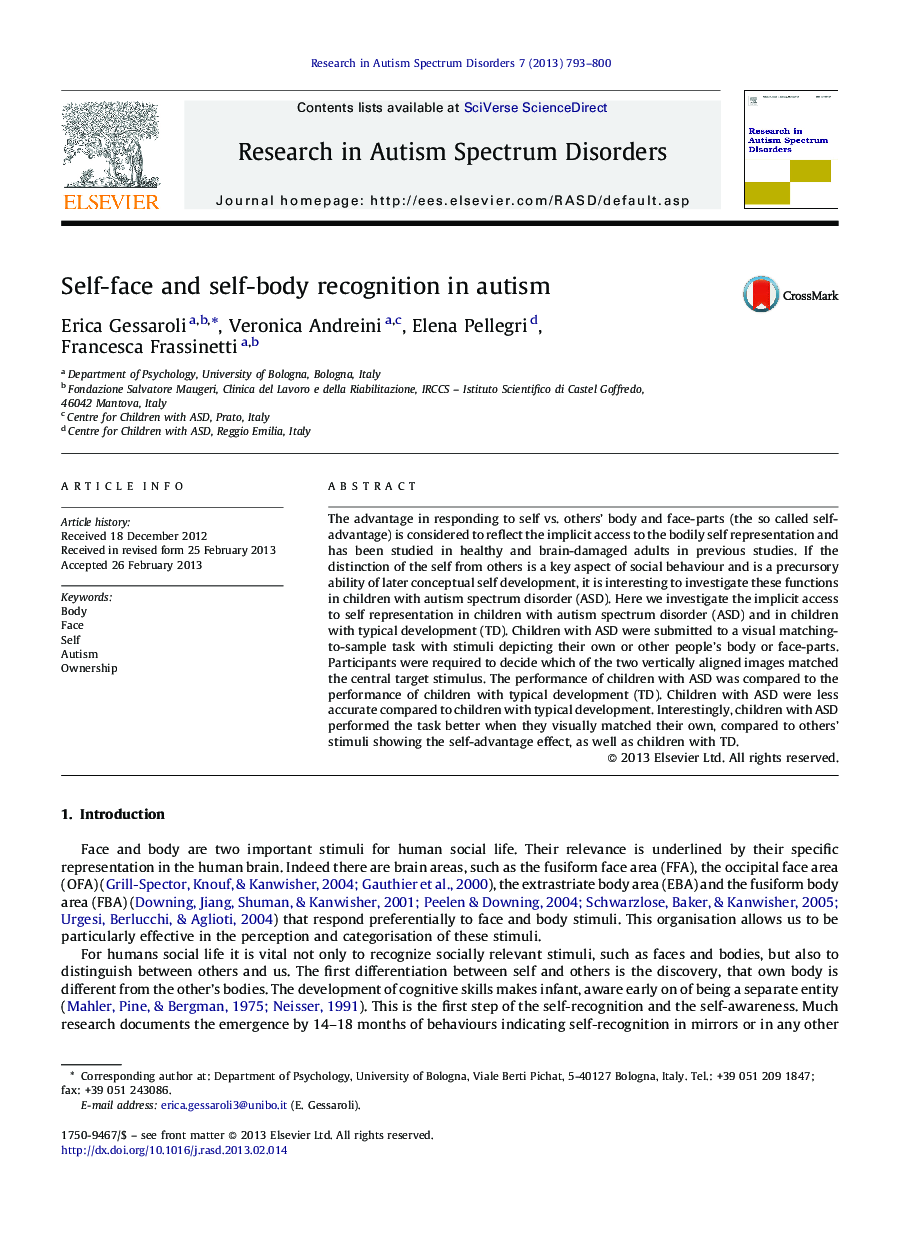| کد مقاله | کد نشریه | سال انتشار | مقاله انگلیسی | نسخه تمام متن |
|---|---|---|---|---|
| 370161 | 621850 | 2013 | 8 صفحه PDF | دانلود رایگان |

The advantage in responding to self vs. others’ body and face-parts (the so called self-advantage) is considered to reflect the implicit access to the bodily self representation and has been studied in healthy and brain-damaged adults in previous studies. If the distinction of the self from others is a key aspect of social behaviour and is a precursory ability of later conceptual self development, it is interesting to investigate these functions in children with autism spectrum disorder (ASD). Here we investigate the implicit access to self representation in children with autism spectrum disorder (ASD) and in children with typical development (TD). Children with ASD were submitted to a visual matching-to-sample task with stimuli depicting their own or other people's body or face-parts. Participants were required to decide which of the two vertically aligned images matched the central target stimulus. The performance of children with ASD was compared to the performance of children with typical development (TD). Children with ASD were less accurate compared to children with typical development. Interestingly, children with ASD performed the task better when they visually matched their own, compared to others’ stimuli showing the self-advantage effect, as well as children with TD.
► Children are advantage in processing self compared to other's body and face stimuli.
► The self-advantage effect is present both in autistic and healthy children.
► The implicit access to self-body representation is preserved in autism.
Journal: Research in Autism Spectrum Disorders - Volume 7, Issue 6, June 2013, Pages 793–800